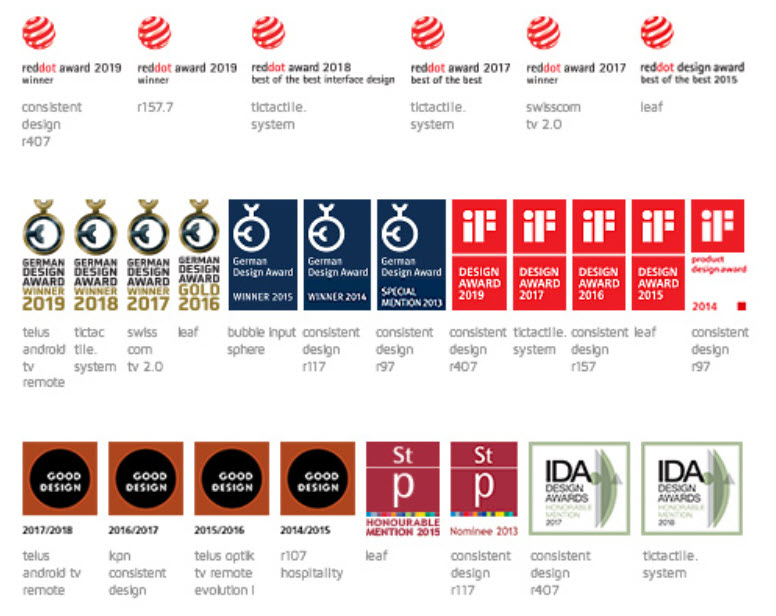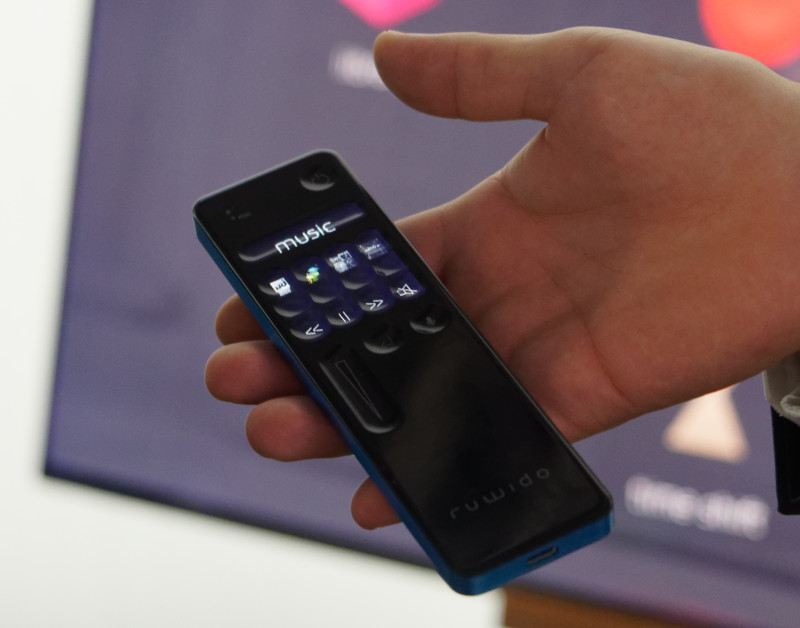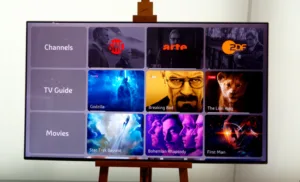I enjoyed Pete’s article about the developments in remote controls a couple of weeks ago. (Losing the TV Remote Control (Intentionally)). His conclusion was that we might want to replace remote controls with voice controls. I have a different view, based on a number of conversations with one of my favourite companies, Ruwido.

First, let me introduce Ruwido. The company is a developer of interface systems for, mainly, TV applications based around remote controls. It’s a small/medium company with 200 employees (at least compared to many tech giants) and is a fine example of what is known in Germany as the ‘Mittelstand’ – small or medium-sized companies that are real specialists and can have global reach in the segments that they address. However, Ruwido is based in Salzburg, Austria, rather than Germany.
Ruwido develops both the physical remote controls and also the matching GUIs for STBs as the company believes that the control of an entertainment system, if it is to be optimised and intuitive, really needs integration between the control in the hand as well as the screen. The firm argues that when you are trying to control the screen, you want to look at the screen, not the remote (which is why it argued several years ago that control systems based around personal devices such as smartphones were likely to be less attractive if you have to look at the device, rather than the TV.)
Before I get back to the details of Ruwido’s control systems, there are a couple of things about the firm that I should explain.
But First Some Background
First, it puts huge efforts into making really beautiful and tactile controls. The company has such high quality standards that it had to develop some of its own production machinery because it was simply unable to buy machines that would create plastic mouldings of high enough quality. As a result, its customers include high end German auto makers.
 Ruwido has won many design awards
Ruwido has won many design awards
It also puts a huge amount of effort into human factors research, managed by the firms R&D Director, Regina Bernhaupt, who is also a full Professor at the Eindhoven University of Technology. Regina always has a clear view of the rights and wrongs in human interface designs. I haven’t always agreed with her, but it’s difficult to argue as she is a very good scientist and always bases her ideas on detailed formal user research.
Higher priced remote controls can be difficult to sell – I remember something Paul Gray said about an expensive remote control. He’s a very respected analyst in the TV field, although these days he has wider responsibilities at IHS, and he said in relation to another remote control ‘that’s a $50 solution to a $5 problem’. So, how does Ruwido get business for better and more expensive remote controls? Quite simply, the firm has data to show that if service operators adopt the technology of the control and the interface, they can reduce customer churn. Customers are happier, stay longer and spend more. That means it is worth a bit more investment in the remote. The data turns the quality argument into a financial argument.
Tictactile Matches the Control to the Display
Over the last couple of years, the company has done a lot of work with its ‘Tictactile’ concept, which has won a number of important design awards. The Tictactile (now in V7.0) uses a 4 x 3 matrix of buttons and a matching interface on the screen to aid navigation and control. It’s very easy and comfortable to use without looking at the control, which means the viewer can concentrate on the screen. The company has also developed technology that ‘recognises who has picked the control up’, although it wouldn’t tell us how it does it! That means that user interfaces can be individually optimised for the user without any special login. Very cool!
Ruwido’s interface matches the remote. Image:Meko
At IBC this year, it showed how it has developed a remote with a display under the tile points that can be programmed to add icons, allowing the remote to be used for smart home applications without needing to use the TV.
 The pattern of the remote matches the images on the screen, making the Tictactile very intuitive. There is a button to invoke voice control. Image:Meko
The pattern of the remote matches the images on the screen, making the Tictactile very intuitive. There is a button to invoke voice control. Image:Meko
Back to Voice
Anyway, I should finally get to the point that I started with – the importance of voice. Ruwido has been working on the development of voice controls for a number of years and I first discussed it with CEO Ferdinand Maier and also with Bernhaupt four or five years ago. They explained that they had found that voice works really well, but only if you know what you want. However, it found that the use of voice can be less effective and slower than using the display if you want to browse or you are not sure what you want to watch or do. Voice can work well as an additional modality to go along with the remote, but doesn’t replace it.
The more I thought about it, the more I agreed. I find I do use my Alexa from time to time, but always to perform very specific operations or provide very specific information. For example, it’s very handy to set alarms. It’s also useful to do conversions (most of my writers are in the US, so I often have to add metric data. Asking Alexa to convert currencies or dimensions is great as I don’t have to take my hands off the keyboard of the article I’m working on). However, I wouldn’t ask Alexa to list what I have as recommendations on YouTube or to report what’s on Facebook. (BR)

